Week Five: September 22 - 28
This Monday was the first day of prac - for real this time! I got to finally meet Dr. Brian Gratwicke, who has more frog statues in his office than I think I've ever seen before in my life. Matt Evans, who I met over the video meeting last week, was also there. It was raining, which made for perfect salamander weather; so perfect, in fact, that we caught 26 salamanders across the 2 plots we checked (and a bonus four-toed salamander which L managed to grab from under the coverboards!) Brian said that it's usually pretty barren until mid-October, but L and I seem to be good luck when it comes to salamanders. Catching 26 salamanders meant we also had to process all of them, though, which took forever. By the time we got back from putting them all back from whence they came, it was time for dinner. I definitely had fun, though! Even the more tedious measuring was still pretty fun, and the salamanders were certainly wiggly enough to keep things interesting. I don't envy Matt and Brian - they were the ones who had to try to tag the salamanders with UV dye and p-chips. Eventually, they're going to train us how to do that, too, but I think I'm okay with waiting on that one...
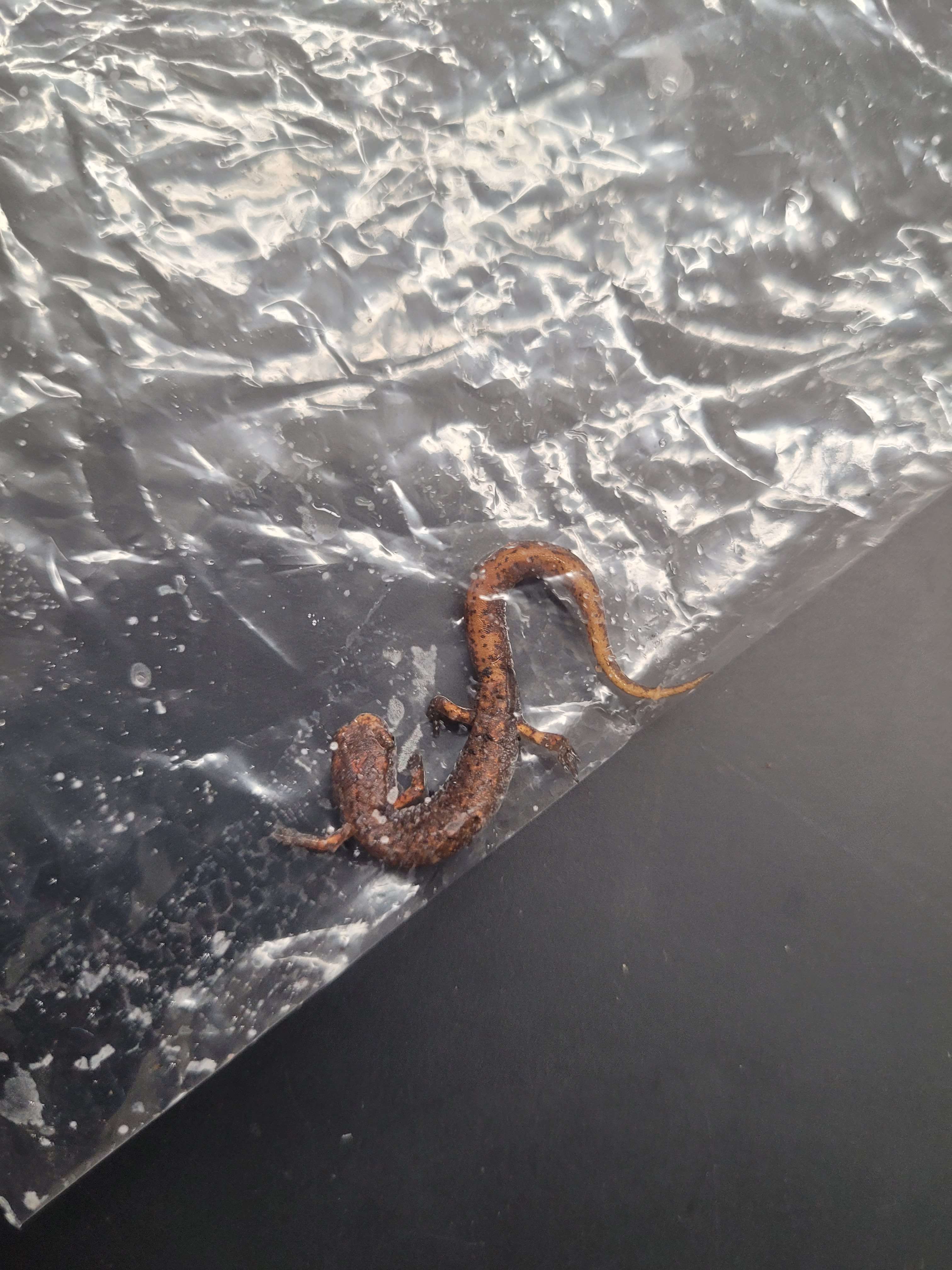
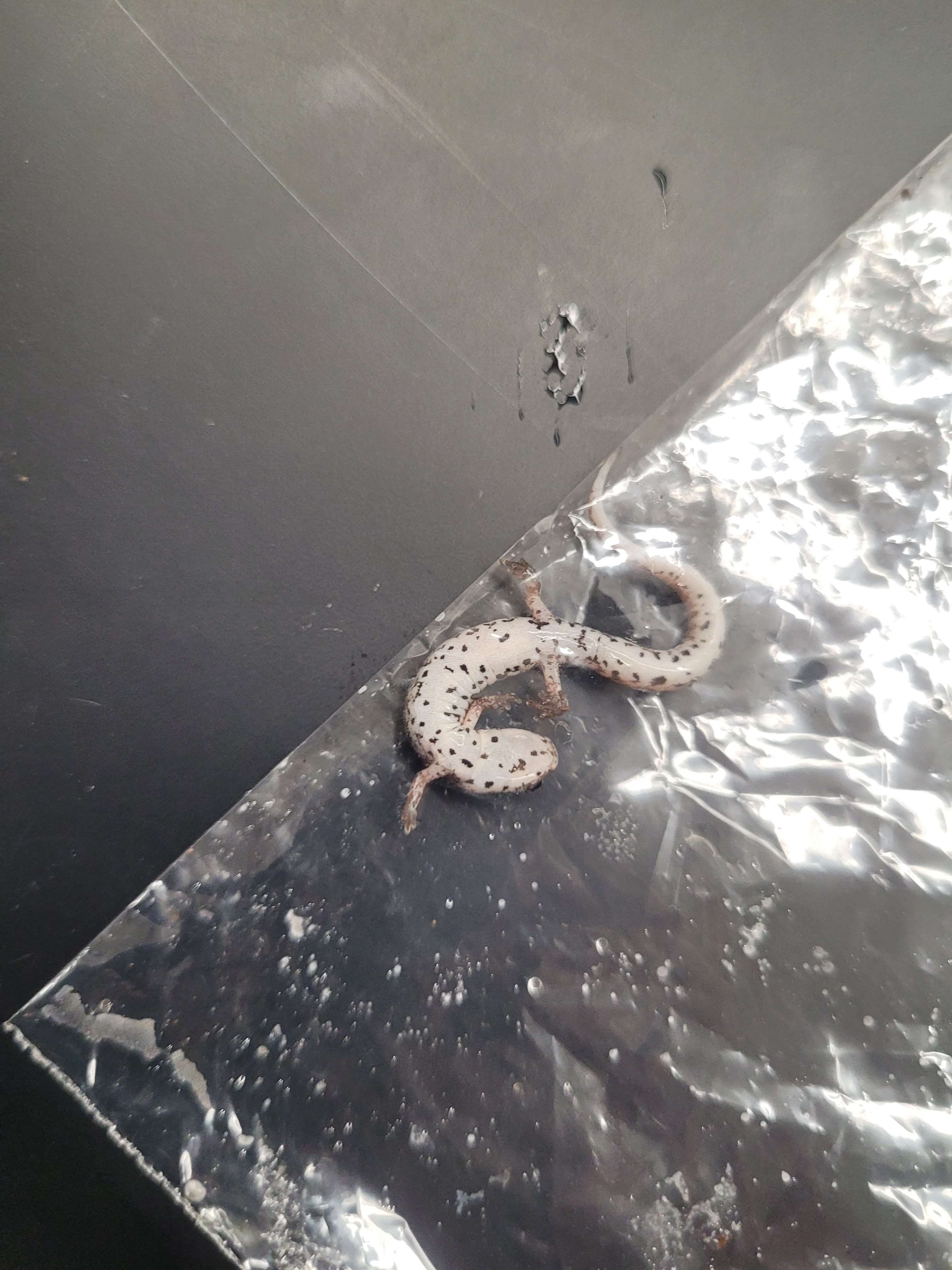
Tuesday was, surprisingly, more salamanders! We spent the morning learning about the importance of different types of surveys for conservation management (after all, you can't manage a population if you don't know what's there, how many there are, where they spend their time, and if/how that population is changing). Then, in the afternoon, we went out to the Training Grid to try out some of those methods ourselves. Just like on Monday, we were doing coverboard surveys, though this time we didn't technically have to catch the salamanders. Which is good, because the very first board that Josh and I flipped over had a lovely little leadback, which promptly escaped under the leaf litter before we could catch it. We were also supposed to make note of any other species that we found under the boards, a list which ended up including a whole ant colony, dozens of isopods, and several unsettlingly large spiders. Then we tried out some line transect surveys for variety. Finally, we headed to Leach Pond to set up minnow traps for the next day.
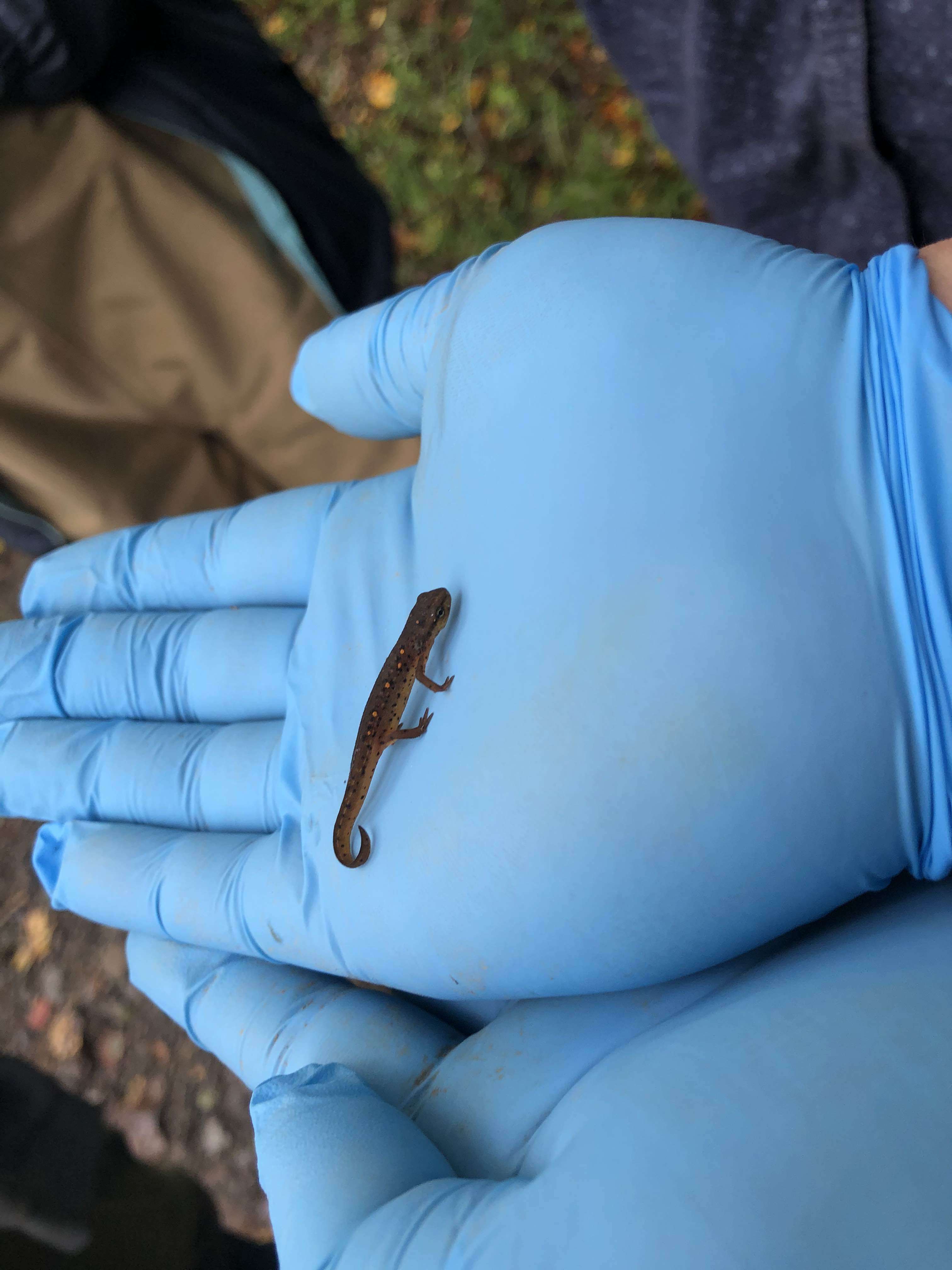
First thing on Wednesday, we were out at Leach Pond checking those minnow traps - they had to get emptied before it got too hot, since they weren't fully submerged and our captured critters could have overheated. Though Stephanie briefed us on telling apart bullfrog and green frog tadpoles (bullfrogs only have spots on the dorsal half of their tail, while green frogs have them on both the top and bottom), there was only one bullfrog tadpole that we found across the whole day, and that was while we did our sweep netting! Maddox had great luck with catching red-spotted newts, though, including one who was just on the verge of entering the red eft stage. I love how weird newt lifecycles are. Typically, it goes egg -> fully aquatic tadpole -> fully terrestrial and toxic red eft -> primarily aquatic and toxic adult, but apparently some newts can skip the red eft stage entirely - or go from an aquatic adult back into a terrestrial red eft! Whatever it is that triggers that change, it must be a pretty complex mechanism.
After the pond, we headed to Posey Creek to do some time-limited stream sampling. We were supposed to be looking for aquatic salamanders, but all we wound up finding was a single frog and a red-backed salamander that was hiding under a rock on the island in the middle of our survey area. Not the most successful attempt, but the water was way lower than we had been expecting, so the leaf litter bags that Stephanie set out weren't able to help and the water itself got murky super quick.
We rounded out the day by looking for Kenneth the box turtle using radio telemetry. Our lack of salamander luck got balanced out pretty quickly, because we managed to find him within an hour, and even though we were a bit worried he was in the middle of the huge brush pile our receivers were indicating, he turned out to be in an easily-reached location right on the edge. It was pretty fun to try and figure out the radio telemetry equipment, though I had a hard time distinguishing the volume of the beeps once we got closer. I'm pretty sure that back when I visited SCBI in high school with Mountain Vista Governor's School, they let us run around with some of the same equipment, but I can't remember if I was any better with it back then or not!

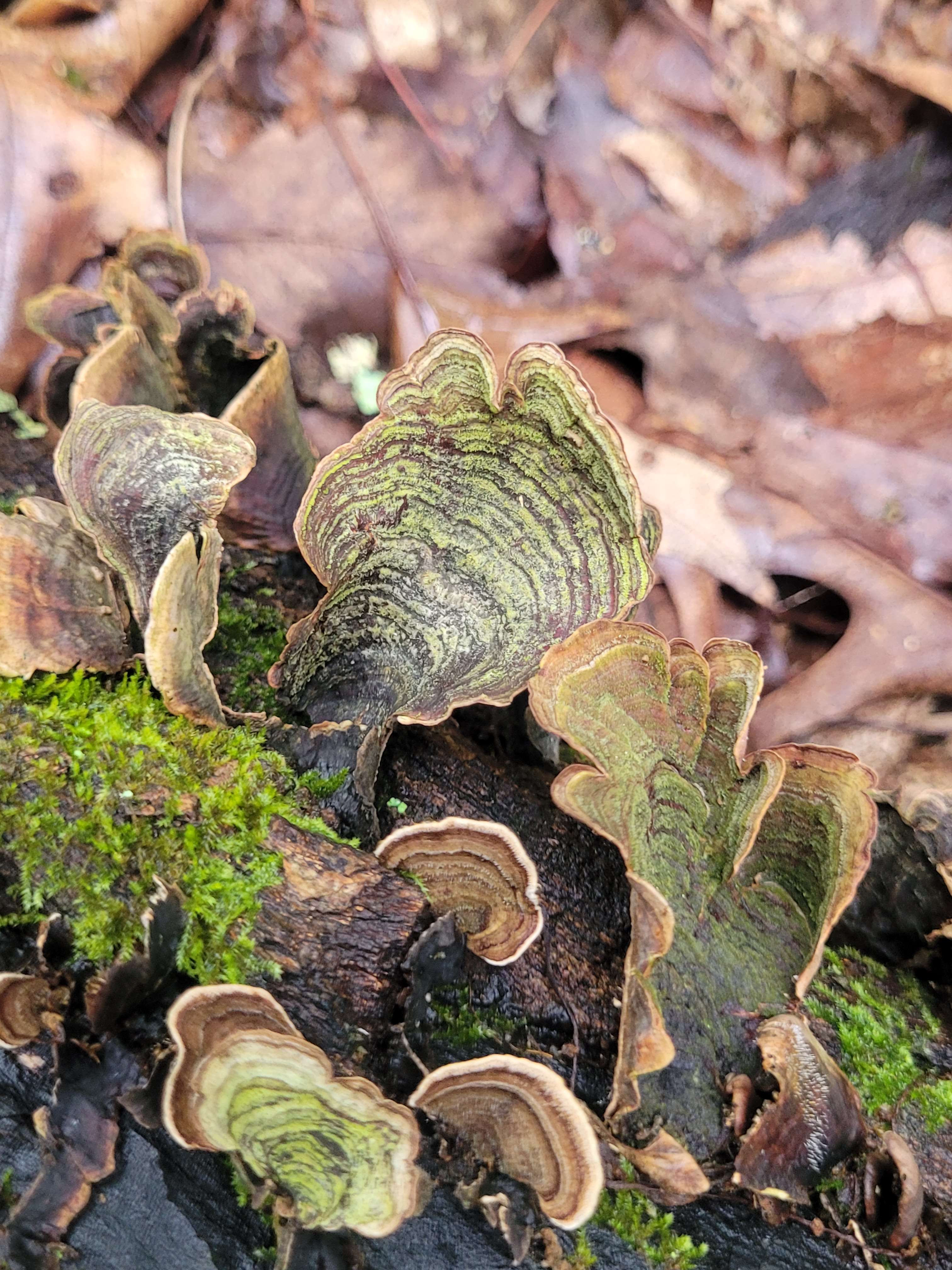
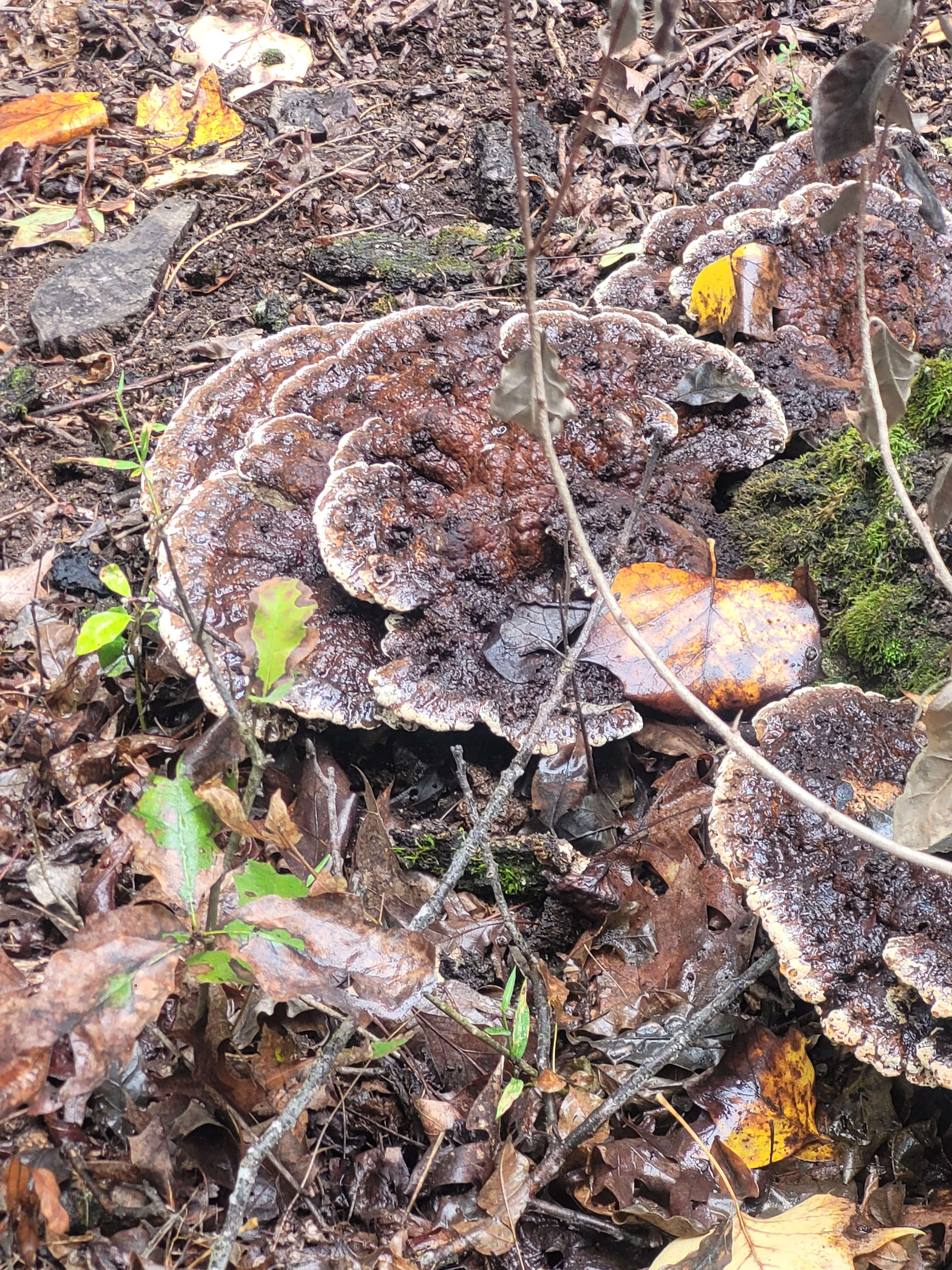
Thursday was a bit less hectic. We started off by analyzing our data from the previous two days, including a lesson on effective figures for science. There were some truly awful ones on that slideshow! Thankfully, our data wasn't nearly that chaotic, though trying to get all of the it entered on the spreadsheet when everyone else was also trying to enter their data was a bit of a mess. I think we had three different common names for isopods on there before someone consolidated them into one category. Then we had to try and analyze data across multiple years to find some sort of interesting trend. I went with the different proportions of red-backed salamander morphs; you would expect, intuitively, that the red-backed morph would be the most common, but the (admittedly limited) data that we had suggested we caught/saw leadbacks more often! I might have to poke around in the big SPARCNet dataset at some point and see if the data from a more intensive project matches up with that trend. We also messed around a little bit in Google Earth.
After that, we met with David Kocka, a state biologist from the VDWR. He talked a lot about the different management practices they're responsible for, mostly related to game species like deer. The state of Virginia didn't even have a proper, formalized deer management plan until 1999, which was nuts to me. Maybe it's just the fact that I grew up around a lot of casual deer hunters, but learning about all the different county and city regulations about deer hunting really highlighted the reason why you can't throw a rock without hitting a deer around here - there's just so many restrictions, and so many places outside of the Shenandoah Valley are much harsher about them. Which does make sense, in a way, since most of those places are more urban, but it's still a bit weird to think about.
David also had some amazing stories about the crazier side of his job: helping with human-wildlife interactions. Even though all wildlife is legally property of the government, some people think it's perfectly fine to keep full-grown deer in their basements, apparently. Or they just don't know how to bear-proof their dumpsters, which is a lot more common. The real kicker, though, was when David mentioned that he had worked on a paper with Bill McShea about how there aren't any (established populations of) mountain lions in Virginia. When I went to his PDE back at the very start of the semester, Bill said that he still, to this day, gets people reaching out to him about how he's wrong, and David confirmed that those people still send angry emails to him, too!
Friday was all about maps - GIS and otherwise. Jim had another lovely slideshow full of terrible maps to show us what not to do, and then we got to learn how to really use Google Earth for presenting our data. Our big projects for that are to make a map showing our radio telemetry data from Wednesday, and then to make a map of a proposed conservation area for Jefferson salamanders on SCBI campus. I'm looking forward to both of those, honestly - it's a lot of fun to mess around in Google Earth!